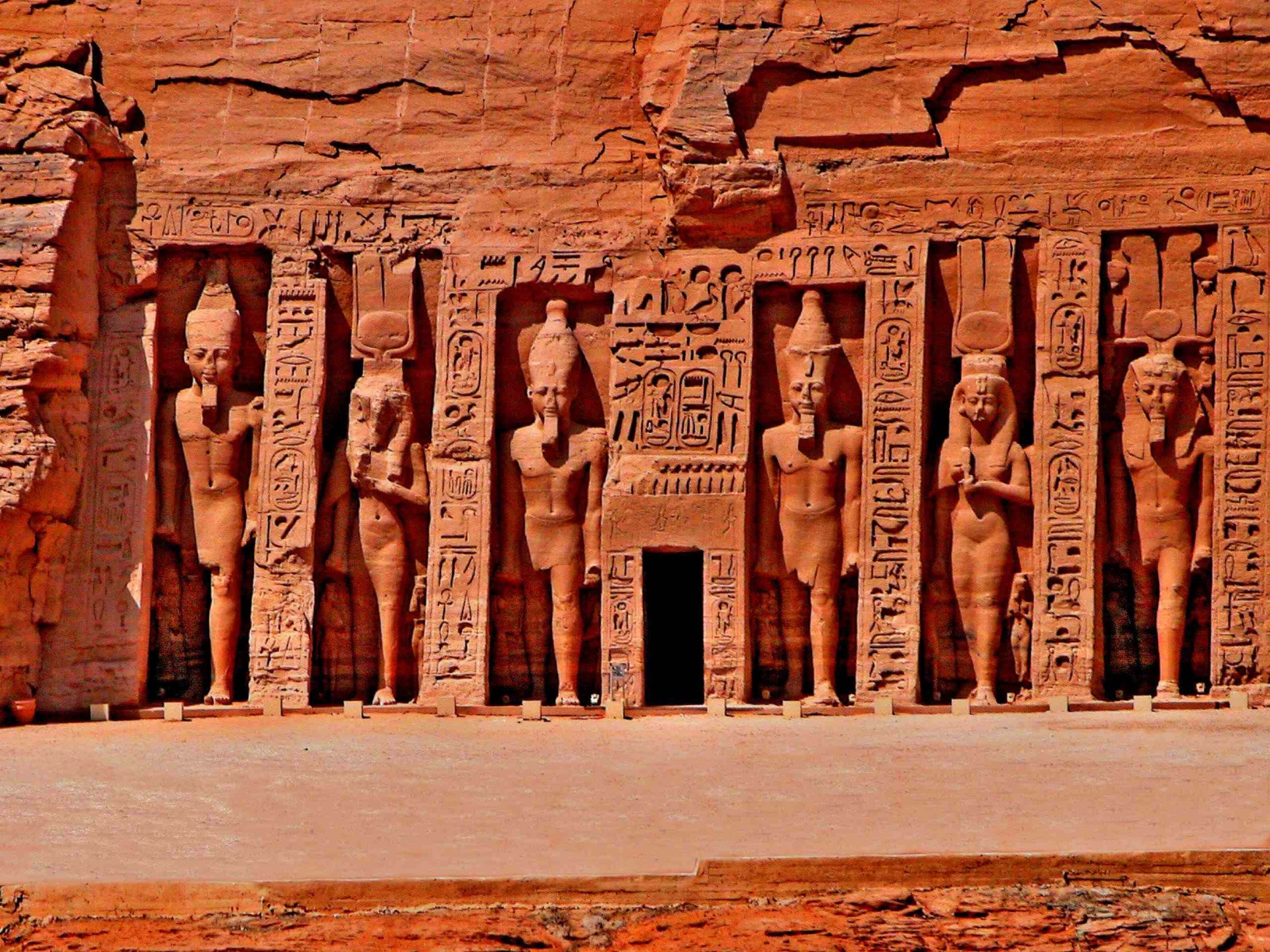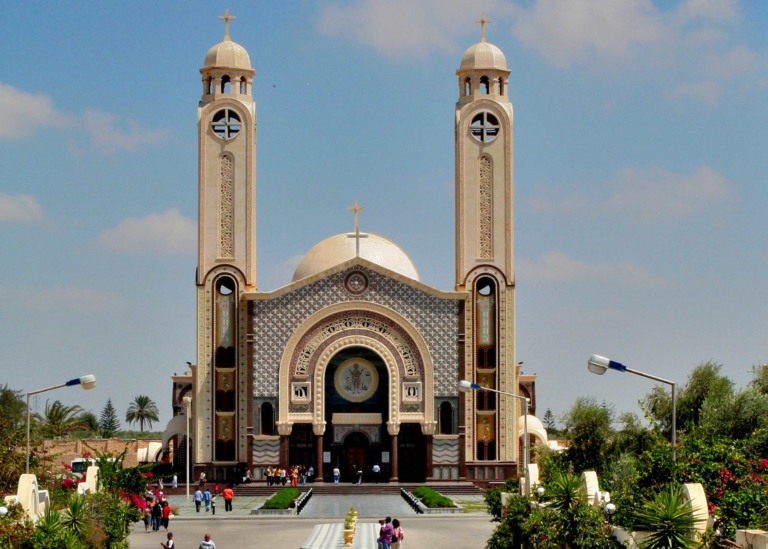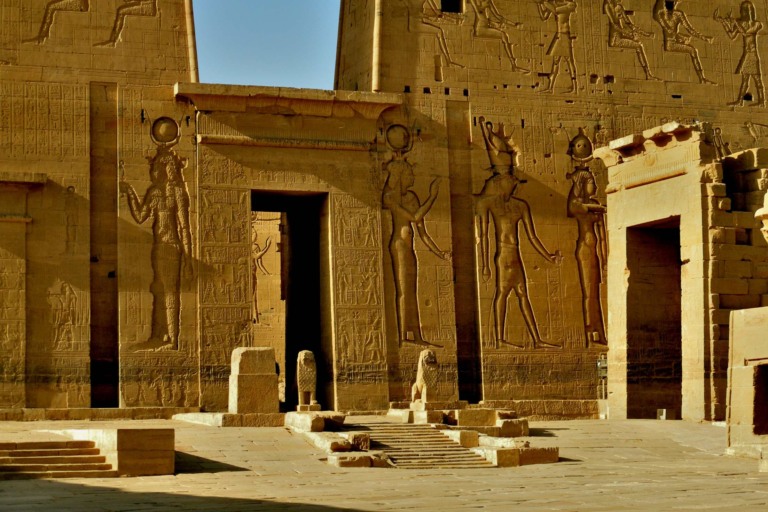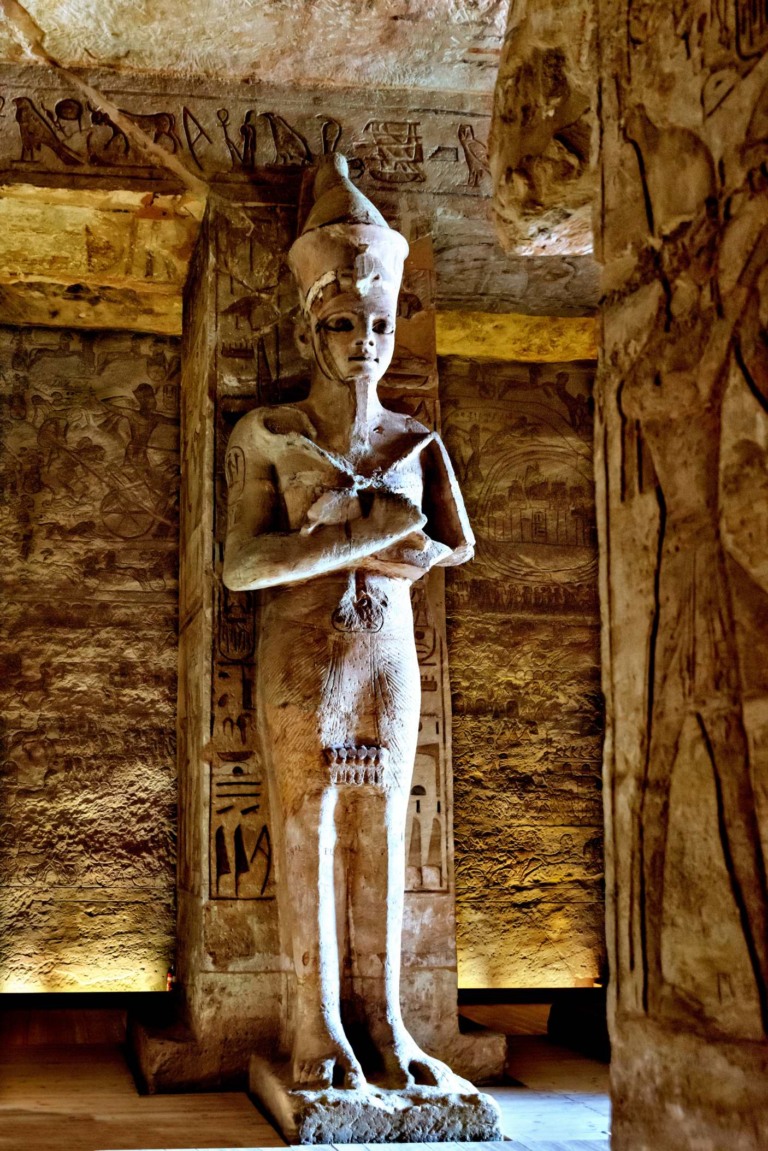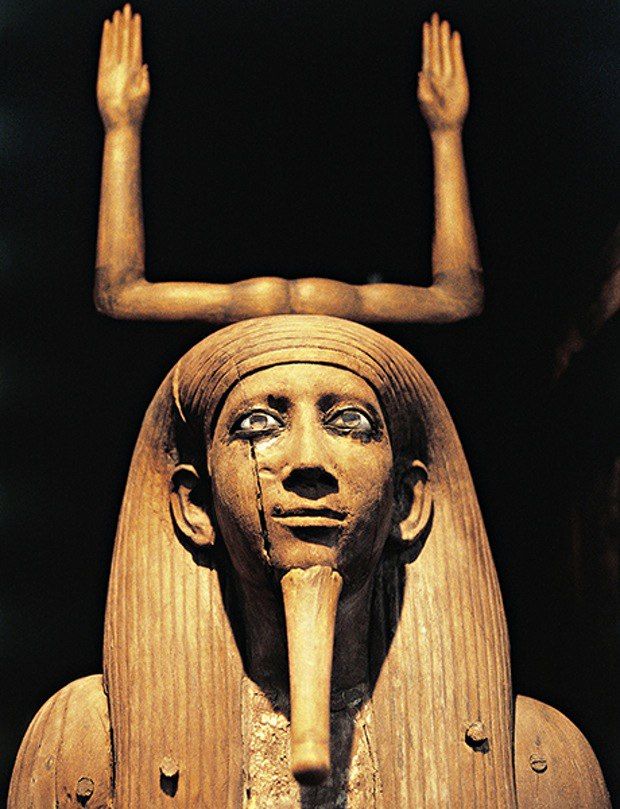The Nubians are a group of people who have always lived in the area that is now north Sudan and south Egypt. They are related to the early people who lived in the central Nile Valley, which is thought to be one of the first places where civilization began. The Nubians are a group of people who live in the southern valley of Egypt. They are not the same as other Egyptians, but they did marry people from other groups, especially Arabs. They speak Nubian languages, which are part of the Northern and Eastern Sudanic languages, as their first language. They also speak Arabic as a second language.
Nubia Egypt
In the central Nubian region, early Neolithic settlements from 7000 BC have been found. It is thought that Wadi Halfa is the oldest town in the central Nile valley. Parts of Nubia, especially Lower Nubia, were sometimes a part of ancient Pharaonic Egypt and other times a rival state made up of parts of Meroe or the Kingdom of Kush. By the Twenty-fifth Dynasty (744 BC–656 BC), all of Egypt and Nubia were joined together, and Egypt reached all the way down to where Khartoum is now.
But in 656 BC, Egypt was ruled again by its own native 26th Dynasty. The ancient Nubians were known for how well they could use a bow and arrow as warriors. The Nubians became Christians in the Middle Ages and set up three kingdoms: Nobatia in the north, Makuria in the middle, and Alodia in the south. Then, when the Sudan area became more Islamic, they became Muslims.
Nubian Culture and Traditions
Nubian culture is a magical topic to talk about because it shows how amazing the Nubian people’s history, facts, and monuments are. The main goal of this article is to tell everyone about the history, culture, and monuments of the ancient Nubians in Egypt. The Nubian region is made up of 123,000 square kilometers of land along the Nile River, between the cities of Aswan in southern Egypt and Khartoum in the center of northern Sudan.
Nubia was one of the first ancient African civilizations. Its history can be traced back to 2000 BCE and ends in 1504 AD. Alara was the first known prince of Nubia. He was the King of Kush, which was also called “Nubia.” He began the Napatan, or Twenty-fifth, Kushite dynasty at Napata in Nubia, which is now called Sudan. Kashta, who took over for Alara, expanded Kushitic control to Elephantine and Thebes in Upper Egypt, which were in the north.
Nubian History
During Egypt’s New Kingdom period (1570–1070 BC), when Thutmose I was pharaoh, he invaded the land around 1500 BC. Nubia was well-known for being home to many powerful kingdoms, most notably the kingdom of Kush, which took over Egypt in the 8th century BC and started the 25th dynasty. In ancient Egypt, the 25th Dynasty was a special time because it was when a number of Nubian pharaohs and rulers came to power and, for the most part, became a part of Egyptian culture.
Some of the Nubians’ cultures were brought to Egypt, but the rules for government, art style, religious practices, temples, and building methods stayed the same. The Nubians tried to bring back the tradition of building pyramids, but they failed. For about 100 years, the Nubians ruled over parts of Egypt before the Assyrians eventually defeated them and drove them out.
Even though Egyptians and Nubians sometimes fought with each other, their relationship was mostly peaceful for most of history. There was a lot of cultural exchange and marriage between the two groups. Even before the 25th Dynasty, many Egyptian pharaohs and Nubian queens had Nubian DNA and heritage in their blood.
In the 4th century AD, the great kingdom of Kush fell. After that, Nubia was split between Egypt and the Senner sultanate. This led to the region being partly Arabized and quickly converted to Islam by the Ottoman Empire in the 16th century. In 1899, the Khedive of Egypt united the whole area. This happened in the 19th century.
Ancient Nubia
During times of peace and war, the relationship between the two countries was very strong. Based on rock art, they both used similar symbols of royalty. There were many cultural exchanges, and the two groups worked together and even got married. They did a lot of business together by trading ebony, ivory, leopard skins, and different kinds of resin.
The Nubia was Egypt’s way of getting gold, incense, ebony, copper, ivory, and rare animals from east and south Africa. Also keep in mind that the Nubians in ancient Egypt had a very complex relationship with the native Egyptians as they were neighbors who traded with each other but would fight and conquer one another throughout history.
Where is Nubia
In Egyptian trade records from 2300 BCE, the Nubians were mentioned for the first time. People think that the Nubians are one of the oldest groups of people on Earth. They are known for being friendly and open, and their history and culture are very interesting. The Nubians are related to an ancient African culture that used to live in and rule Egypt. Most Nubians live in the places where their ancestors came from.
These places are in southern Egypt and northern Sudan. The Nubians come from Sudan, and the area where they used to live is called Nubia. The Nubians come from an area in the middle of the Nile Valley where they can start farming. In the history of ancient Egypt, they were very important. During the Middle Ages, they became Christians and set up three kingdoms called Nobatia, Makuria, and Alodia.
People from Nubia also follow Islam. Even though Nubians live in two different countries, it is important to know that they have their own language and culture. Kenzi, Nobin, Birgid, Midob, and Kordofan Nubian are the five modern Nubian languages that people speak. The languages are very similar, but they are different depending on where the Nubians live.
The Nubians were also known as tough and strong soldiers, especially when it came to archery. They were known as the legendary warriors of the Medjay, which used to be a place where Nubians lived but has since come to mean an elite and deadly paramilitary force in the Egyptian army. Around 3500 BCE, the Egyptians called the Nubian area “Ta-Seti,” which means “The Land of the Bow.”
This name came from the fact that the Nubians were good at archery. The Nubians were known for how fierce they were in battle, but they also worked in all parts of ancient Egyptian life, like as merchants, servants, and temple workers. The Nubians were very important to the rise and success of ancient Egyptian culture, and they are still a big part of Egypt and especially Egyptian tourism.
Nubian Temples
The word “Nubia” comes from the word “Nub,” which means gold. This is because there are many gold mines in the area, as well as rare stones and some of Egypt’s most beautiful and grand monuments. The Nubian Monuments were not made by Nubians, but they got their name from where they are. Most Nubians in Egypt live near the border with Sudan, from Aswan to Abu Simbel.
It is a place where archaeologists have found things that date back more than 3000 years. It is called “Nubian monuments from Abu Simbel to Philae.” The Temple of Philae and the Temple of Abu Simbel, which are two of the most well-known temples from ancient Egypt, are both in the Nubia area.
Both temples were saved by UNESCO in the 1960s because of the terrible effects of the High Aswan Dam, and the Nile River cruise between Luxor and Aswan is full of must-see places. Between these two temples, there are 11 other places that were built by Nubian kings. Some of the most amazing buildings in Nubia are:
Abu Simbel Temples
In 1200 BC, Ramses the Great, who lived from 1292 to 1186 BC, built the temples of Abu Simbel. They were made to honor the great god Amun and to remember his great achievements, like winning the Battle of Kadesh. Right next to it is the second temple, which his adored wife Nefertari built and is devoted to the goddess Hathor.
Philae Temple
Between 380 and 360 BC, when Egypt was ruled by the Ptolemies, the Philea Temple was the last temple of its kind to be built there. It is well-known for telling stories about Isis, the goddess of motherhood, and how she healed the wife of Osiris, the king of the underworld. It was a very popular place for Egyptians, Nubians, and even people from Greece and Crete to go on pilgrimages.
Qasr Ibrim Fortress
Qasr Ibrim was once famous for being a fortress and a major city located on a cliff above the Nile. But now Qasr Ibrim is on a rocky island in the middle of the Nile River, which makes it hard for tourists to get there.
Kalabsha Temple
During the Roman era, around 30 BC, the Temple of Kalabsha was built to honor the Nubian sun god Mandulis. However, it was never finished.
Temple of Beit el-Wali
Rameses II also built the amazing temple of Beit el-Wali. It was one of the Nubian temples that Ramesses II built to keep Egypt in control of Nubia. People think that this temple was the first one built with this goal in mind.
Temple of Dakka
It is a small temple to Thot, the Egyptian god of knowledge and wisdom. The Temple of Dakka was expanded during the Roman period and used as a fortress along the Nile River.
Temple of Maharraqa
The temple of Maharraqa is a small building that isn’t finished and has a mysterious past. Scholars have been unable to understand who built this temple or its purpose. It does have one very unique feature: a winding staircase that leads to the roof. This is the only one of the Nubian monuments with this design.
Temple of Amada
During the 18th dynasty, Pharaoh Thutmose III constructed the temples of Amun and Re-Horakhty. It is the oldest temple in Nubia. Several pharaohs, like Ramesses II, had their names added to this temple over time.
Temple of Derr
The Temple of Derr or el-Derr, was built by Ramesses II. It is a rock-cut temple that was dedicated to Re-Horakhty, which is a combination of the gods Horus and Ra, Horus was the god of the sky, and Ra was the god of the sun.
Kiosk of Qertassi
The Kiosk of Qertassi is a small Roman building with two columns of Hathor at the front and four thin papyrus columns inside. It is a small but elegant building that isn’t finished and doesn’t have the architect’s name on it. It was probably built around the same time as Trajan’s Kiosk at Philae.
Wadi es-Sebua
The temples of Wadi es-Sebua are located in Lower Nubia. They were built during the New Kingdom of Egypt and include one speos temple that was built during the 19th Dynasty by Pharaoh Ramesses II. The temples got their name from the sphinxes that flanked the approach to the temple forecourts.
Granite Quarries
A granite quarry is a strange place to visit because of what is inside of it. The granite quarry in Aswan is home to two unfinished obelisks. One of the obelisks, had it been completed and erected, would have been nearly one-third larger than any other obelisk in Egypt, which is believed to have been commissioned by Queen Hatshepsut.
Nubian Monuments from Abu Simbel to Philae
The Nubian monuments are in the very south of Egypt, on the shores of the man-made Lake Nasser. They include temples from 11 different places between the Sanctuary of Isis at Philae, which is near the site of the Aswan dam, and the Great Temple of Ramses II at Abu Simbel, which is 280 km to the south. There are two things that make them stand out. First, they are beautiful monuments from the time of the Pharaohs that are 2,000 to 3,000 years old.
Second, because Lake Nasser was getting higher, they had to be taken apart, moved, and put back together in new places. The preservation of the temples of Abu Simbel gives you an idea of how big this operation was. At a cost of US$40 million, the temples were cut into more than 2,000 blocks of stone, each of which weighed 10–40 tons. These blocks were moved and put back together on the lakeshore, 65m above where they were originally built, in a hollow mountain that was built just for them. Nine more temples were moved in the same way.
In addition to the temples at Abu Simbel and Philae, the world heritage site has nine other monuments that are now spread out over four places. Only two of the Nubian monuments are still in their original places: the amazing granite quarries in Aswan and the fortress of Qasr Ibrim, which was built on a 70-meter-high cliff 60 kilometers north of Abu Simbel but is now surrounded by water.
The new location of the temples of Kalabsha, Beit al-Wali, and Kertassi is just south of the Aswan High Dam. About 180 km further south, there are two more groups of temples: the Temples of Wadi As-Subua, Dakka, and Maharraqa have been moved to Wadi As-Subua, and the Temples of Amada and Derr have been moved to Amada.
Travel tips for the Nubian Monuments
Eight separate components of this serial site are shown in the slideshow, beginning in the far south of Egypt next to the Sudanese border at Abu Simbel. Two magnificent rock-cut temples were removed from a site that is now underwater and rebuilt within ‘artificial mountains’ at this location: the Sun Temple of Ramses II and the Hathor Temple of Queen Nefertari.
Abu Simbel is usually reached by coach after getting up very early and driving through the desert for three hours from Aswan. A second group of rebuilt monuments that were also saved from the rising water of Lake Nasser can be seen on a small island near the Aswan High Dam. They are much closer to Aswan. The largest of these is the Temple of Mandulis, which looks like a fortress and has beautiful reliefs and a well-kept nilometer.
Nearby, a small rock-hewn temple, Beit al-Wali, is hidden behind a small courtyard in the rocky hillside. Inside, there are bright pictures of Ramses making sacrifices to Horus and other gods. The third building on the island is the Kiosk of Qertassi. The goddess Hathor stands on top of its tall columns.
A short boat ride takes people to Agilka Island, which is near Aswan and has the Temple of Isis. After its original home on nearby Philae Island was flooded, it and other monuments were moved there. It is a beautiful place, and the architecture of the temple is a beautiful mix of ancient Egyptian and Greco-Roman styles. Many of the original reliefs have been messed up on purpose, and there is graffiti all over the walls, like engraved Coptic crosses and a British war campaign memorial.
The show also goes to four other places: a granite quarry in Aswan with an unfinished obelisk; a great new Nubia museum in Aswan with great exhibits like mummies; Elephantine Island; and the mud-brick ruins of St. Simeon’s monastery on a barren hilltop on the west bank. For safety reasons, tourists can only visit the temples in and around Aswan, such as the Temples of Philae, Kalabsha, Beit al-Wali, and Kertassi, and the temples at Abu Simbel, by tour bus or plane. The groups of temples at Wadi as-Subua and Amada are off-limits.
